Blue eyes are very rare in nature.
A study from 2017 checking color variability in birds and mammals discovered something rather fascinating: the color of the eyes only varies in humans and domestic animals.
Wild animals, with a few exceptions, have only one type of color, light (white, yellow, or light blue) or dark (dark red, brown, or black).
The pigments that give color to the eyes are melanins – blue eyes contain almost no melanin!
Owls do not have blue eyes, only dark brown/black, orange, or yellow ones.
However, that doesn’t mean we can’t have fun in Photoshop and show you what some popular owl species would look like with blue eyes.
Here are 15 owls with blue eyes with photos and some fun facts.
Table of Contents
Owls With Blue Eyes
Snowy Owl
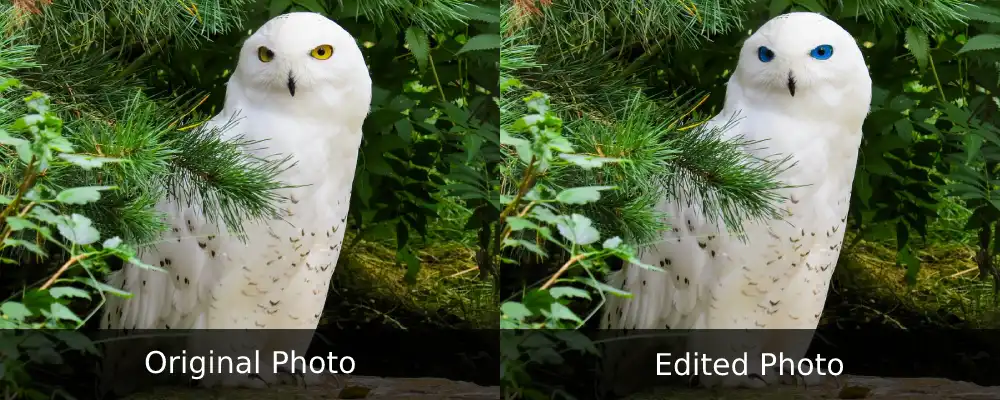
- Scientific Name: Bubo scandiacus
- Length: 21-28 in
- Wingspan: 45-72 in
- Weight: 2.9-6.5 lb
Snowy owls are enormous white birds of prey. They are the heaviest owls in North America and have a longer wingspan than any other owl there.
These beautiful birds are the only white owls in the world – they have bright yellow eyes but here’s what they would look like with blue eyes.
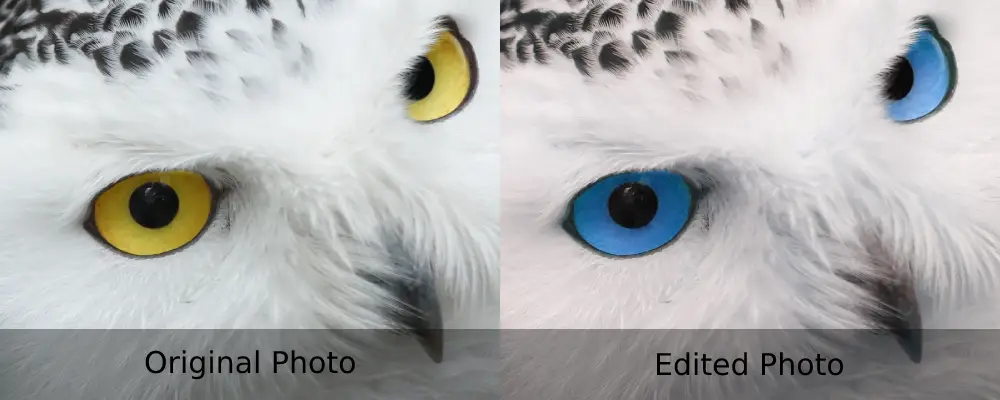
Snowy owls sleep at night, hunt during the day, and have a diet that includes small mammals, some water birds, fish, and even carrion.
Their favorite food is lemmings (small mouselike rodents) – snowy owls might hunt as much as 1,600 of those per year. These now blue-eyed owls are monogamous and mate for life.
Eastern Screech Owl

- Scientific Name: Megascops asio
- Length: 6.3-10 in
- Wingspan: 18-24 in
- Weight: 4-8 oz
Eastern screech owls are small and stocky owls with big heads, yellow eyes, often raised small ear tufts, and horn-colored beaks.
They are found in eastern parts of North America, in different habitats with trees and near water.
Eastern screech-owls are easier to hear than to see – they are most active at night when they hunt insects, small mammals, and birds.
These owls are one of the most common birds found in North Georgia.
Burrowing Owl
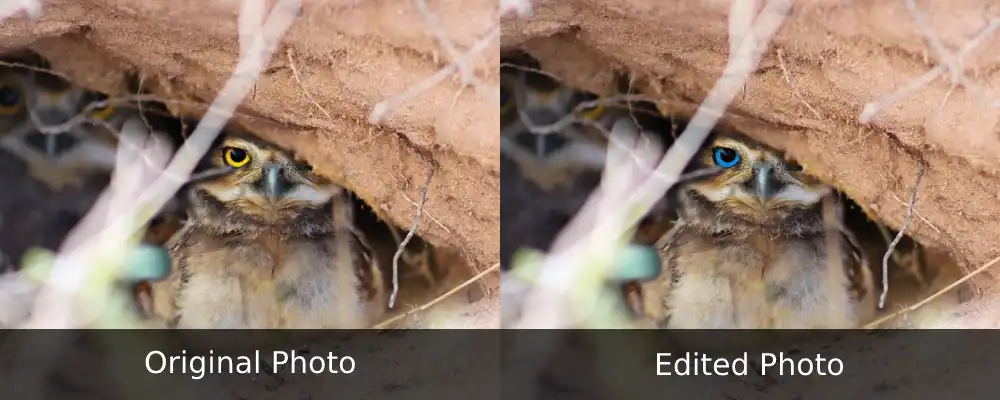
- Scientific Name: Athene cunicularia
- Length: 7-11 in
- Wingspan: 20-24 in
- Weight: 5-8 oz
Burrowing owls are small long-legged birds of prey.
They are the only owl species that nest underground and can be identified by their brown plumage, bright eyes, and lack of ear tufts.
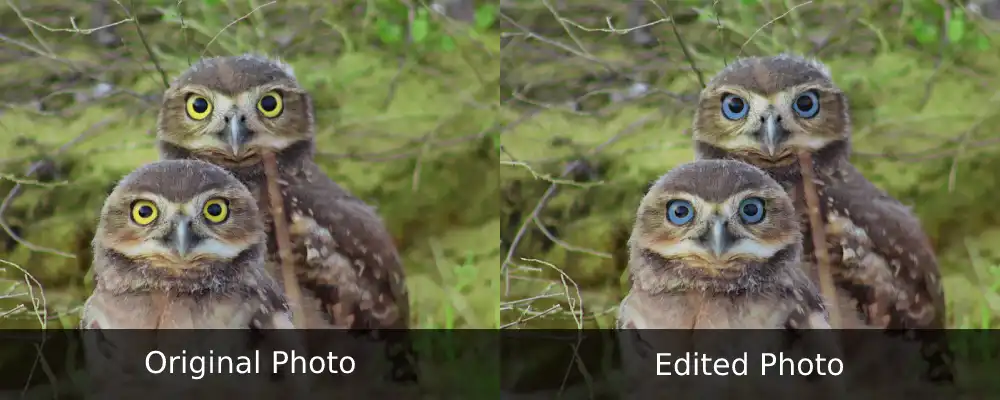
Burrowing owls are common around open areas with no trees, including grasslands, rangelands, agricultural areas, and deserts; unlike most owls, they are active during the day when they hunt insects and small mammals.
Burrowing owls are also one of many birds that are native to Florida.
Barred Owl
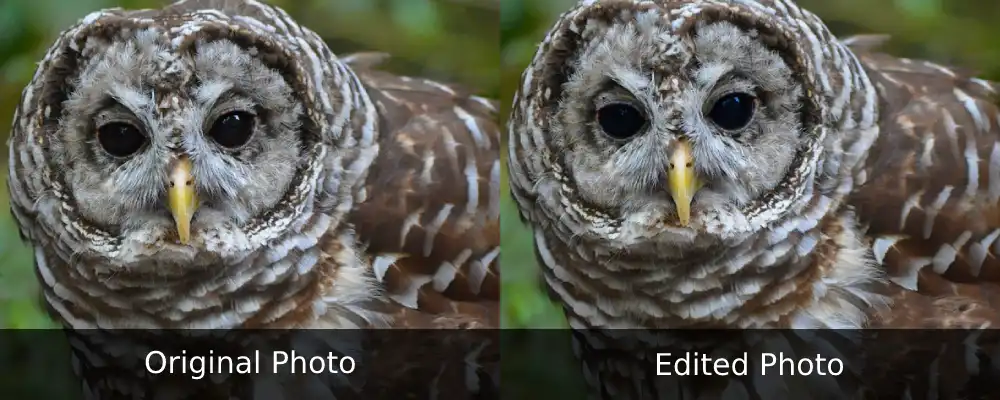
- Scientific Name: Strix varia
- Length: 16-25 in
- Wingspan: 38-49 in
- Weight: 1.3-2.5 lb
Known under several names (northern barred owls, striped owls, or more informally, hoot owls), barred owls are large birds with mottled brown and white plumage.
They can be identified by their yellow beaks, dark eyes, absence of ear tufts, and hoots that can be heard almost half a mile away. Their eyes are so dark that it’s impossible to notice the blue shade.
Barred owls are native to eastern North America, mostly around woods and swamps where they hunt for insects, small mammals, crayfish, and crabs.
Great Horned Owl
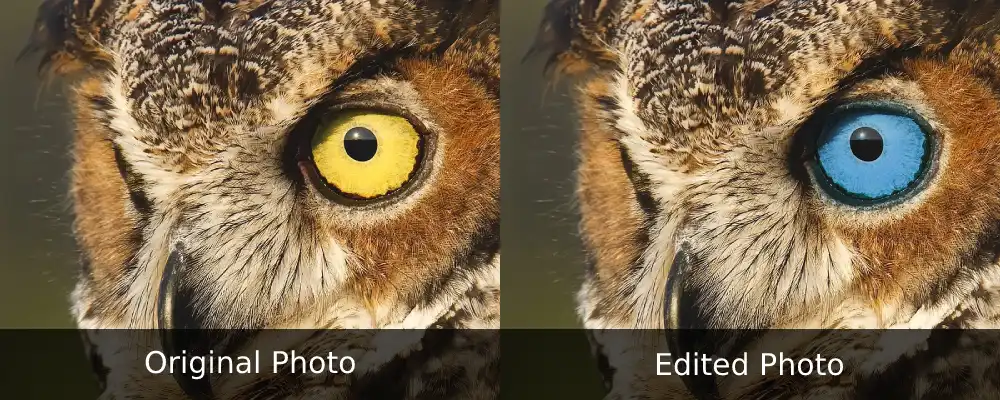
- Scientific Name: Bubo virginianus
- Length: 17-25 in
- Wingspan: 35-60 in
- Weight: 2.7-3.5 lb
With a wingspan of almost 5 feet, length of almost 2 feet, and weight of up to 3.5 pounds, great horned owls are among the largest owls in North America.
These aggressive raptors have gray-brown plumage with a mottled pattern, long, earlike tufts, intimidating huge yellow eyes, and deep hooting calls.
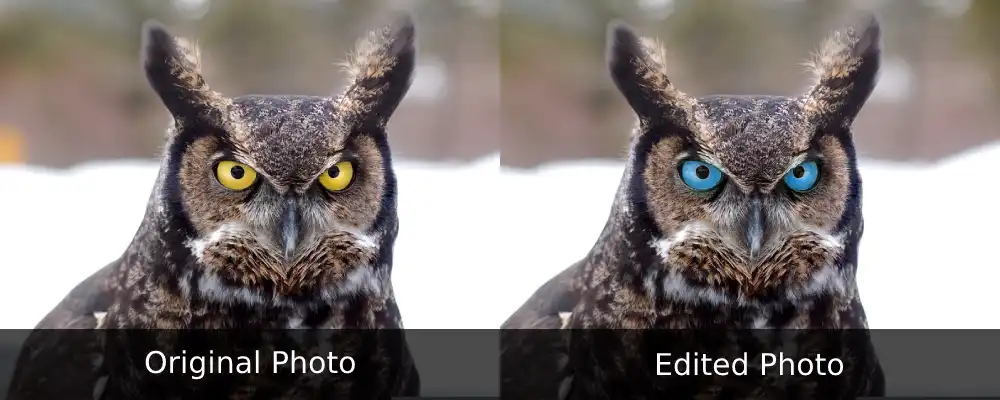
Great horned owls have one of the most diverse diets of all North American raptors and can feed on rabbits, hares, rats, mice, voles, other small mammals, larger mid-sized mammals, reptiles, amphibians, and invertebrates.
Typically well-camouflaged, they are never easy to spot in the wild.
Eurasian Eagle Owl
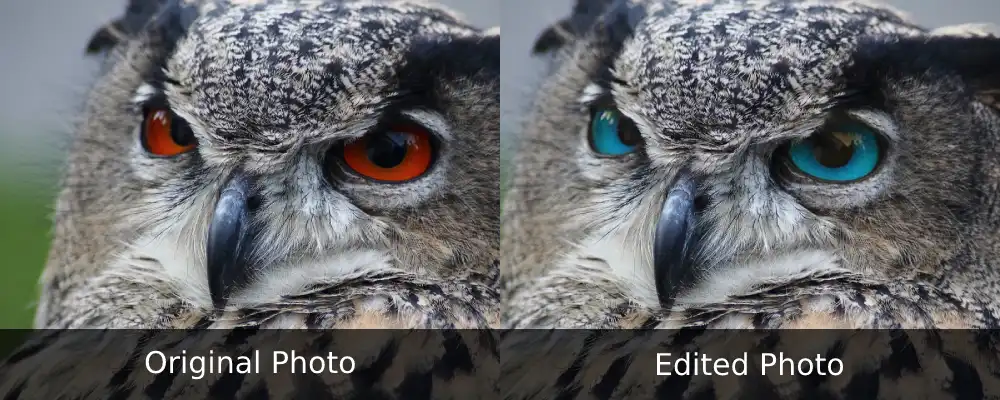
- Scientific Name: Bubo bubo
- Length: 22-30 in
- Wingspan: 51.5-74 in
- Weight: 2.6-10.1 lb
Eurasian eagle-owls are huge and powerful owls found in Europe and Asia, just as the name suggests. They are also called the Uhu and have very pronounced ear tufts, streaked underparts, and bright orange eyes.
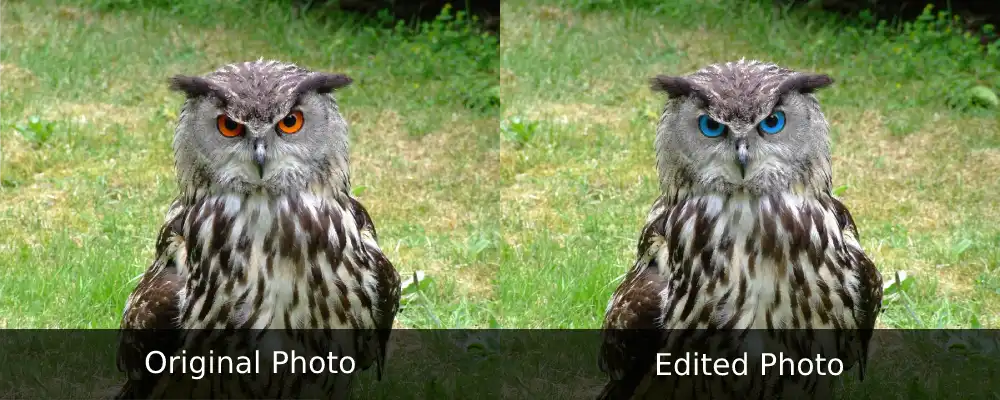
Eurasian eagle-owls are among the largest species of owls and apex predators; they hunt at night using their acute hearing to locate the prey. Pairs will often sing in a duet, exchanging a series of deep and high-pitched hoots.
Great Gray Owl

- Scientific Name: Strix nebulosa
- Length: 24-33 in
- Wingspan: 56-60 in
- Weight: 1.2-4 lb
Great gray owls are the largest species of owls in the world by length. They are known under several names, including Phantoms of the North, bearded owls, sooty owls, etc.
They are found in Europe, Asia, and North America, usually around coniferous forests, meadows, and bogs.
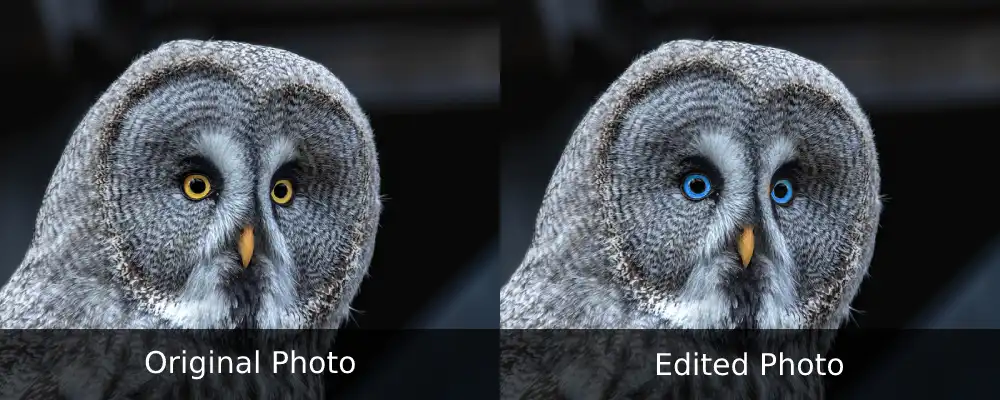
Great gray owls are a very rare species that hunt around dusk and dawn, mostly on voles. Although mostly silent, solitary, and stealthy, these raptors have been known to drive off predators as large as black bears when defending their nests.
You can see more examples of yellow-eyed owls in this article.
Eurasian Pygmy Owl
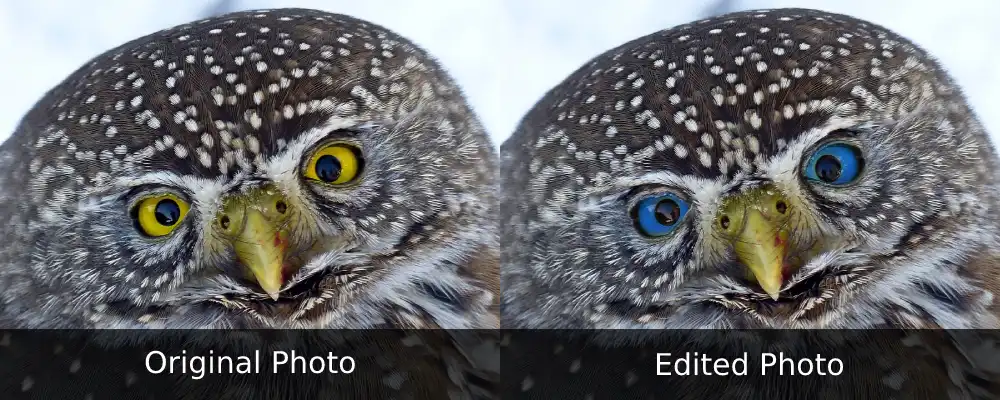
- Scientific Name: Glaucidium passerinum
- Length: 6-7.5 in
- Wingspan: 13.8 in
- Weight: 1.7-2.7 oz
Eurasian pygmy owls are the smallest owl species in Europe. They have reddish-brown plumage with dots, white eyebrows, and staring golden eyes that would look like this if they were blue.
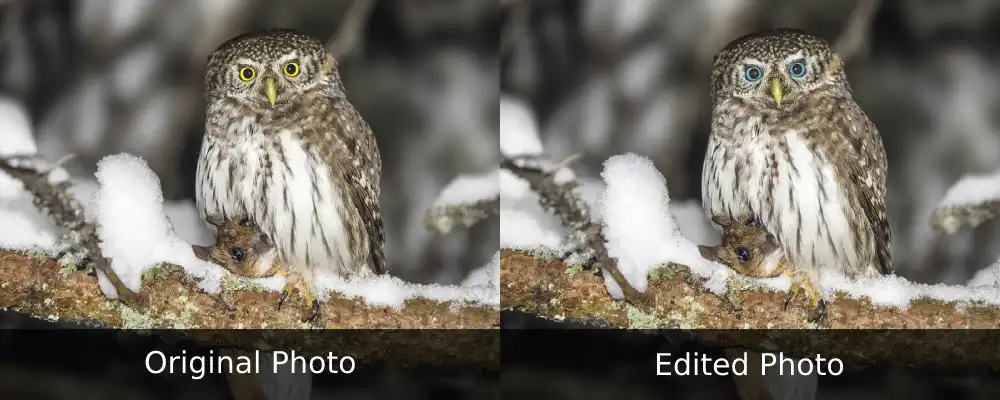
These tiny birds of prey are common in mixed and coniferous forests where they are most active during dusk and dawn (crepuscular animals).
Eurasian pygmy owls feed on voles, bats, lemmings, mice, small birds, lizards, fish, and insects – they will store their food and use it during winter.
Read More: Bird species that have eyebrows on their heads
Southern White-faced Owl

- Scientific Name: Ptilopsis granti
- Length: 8.7–11 in
- Wingspan: 26.7 in
- Weight: 6.5-7.8 oz
Southern white-faced owls are small owls native to southern Africa. They can be identified by their gray backs, pale underparts, and contrasting black-and-white faces. Here’s how their distinctive orange eyes would look in blue.
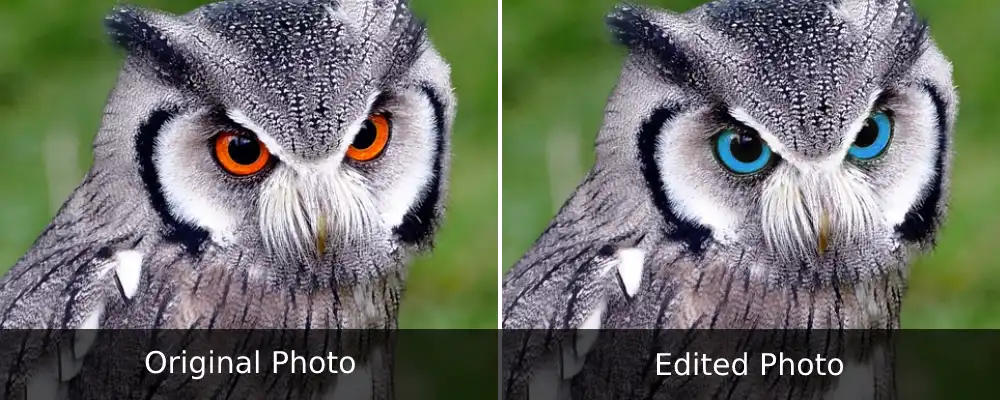
Southern white-faced owls inhabit savanna and dry woodlands where they hunt for large insects, birds, reptiles, and small mammals.
Spotted Eagle-owl

- Scientific Name: Bubo africanus
- Length: 18 in
- Wingspan: 39-55 in
- Weight: 1-2 lb
Spotted eagle-owls are the most common owl species in Southern Africa. These large, gray-brown raptors have long ear tufts, bright yellow eyes, and brown plumage.

Spotted eagle-owls are common in different habitats, including open scrubs, grasslands, forest edges, etc. Their most common call is a soft booming sound that resembles “who-are-you“.
Long-eared Owl

- Scientific Name: Asio otus
- Length: 12-16 in
- Wingspan: 34-40 in
- Weight: 9-15 oz
Also known as northern long-eared owls, lesser horned owls, or cat owls, these medium-sized owls with long ear tufts are found in Europe, Asia, North America, and parts of Africa.
North American long-eared owls have yellow eyes, while their Eurasian counterparts have reddish ones – here’s how long-eared owls would look with blue eyes.
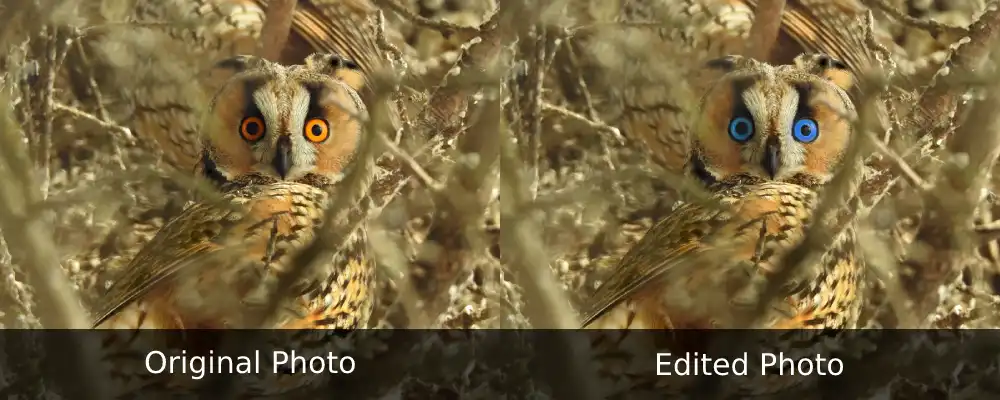
They are common in brushy thickets, conifer groves, and semi-open areas. Long-eared owls are specialized hunters, focusing entirely on small rodents (voles). Males can be extremely vocal and emit hoots that can be heard from over half a mile away.
Little Owl

- Scientific Name: Athene noctua
- Length: 8.7 in
- Wingspan: 22 in
- Weight: 6.3 oz
These small owls are also known as owls of Athena and owls of Minerva and can be found in the open country of Europe, Asia, And Africa. Little owls are distinctive brown owls with white-spotted backs, yellow eyes, and white eyebrows.
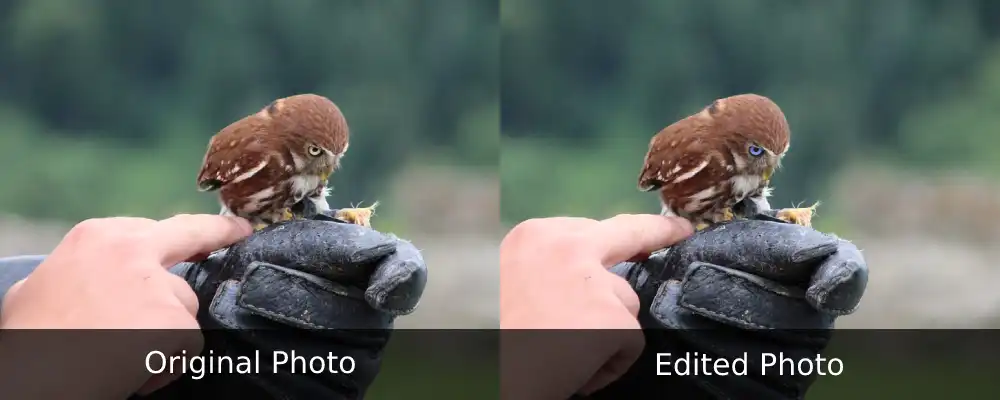
These mostly nocturnal raptors are common in semi-deserts, woodland fringes, steppes, and farmlands where they hunt for insects and earthworms.
Spectacled Owl

- Scientific Name: Pulsatrix perspicillata
- Length: 16-20.6 in
- Wingspan: 33 in
- Weight: 1-2.7 lb
Spectacled owls are large and unmistakable birds found in Central and South America. They are common in humid evergreen forests, often staying hidden in shady spots.

Spectacled owls are brown-black above with buff-colored underparts – they also have light lines around their eyes that look like “spectacles”.
Cape Eagle-Owl

- Scientific Name: Bubo capensis
- Length: 18-24 in
- Wingspan: 48 in
- Weight: 2-4 lb
Cape eagle-owls are large owls with strong-looking builds found in South Africa. They resemble spotted eagle-owls and can be identified by their dark brown plumage, prominent ear tufts, and yellowish-orange eyes.
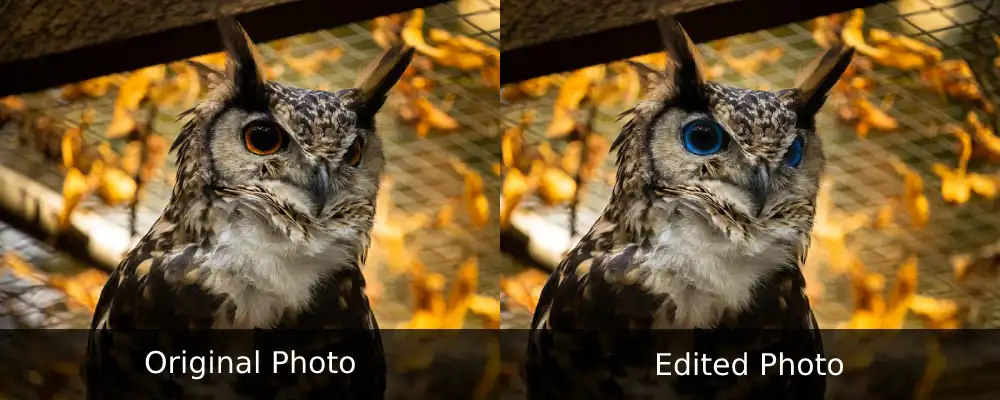
These owls with big eyes inhabit rocky terrain, mostly mountains.
Barn Owl

- Scientific Name: Tyto alba
- Length: 13-15 in
- Wingspan: 31-37 in
- Weight: 9-19 oz
One of the most widely distributed species of owl in the world, barn owls are highly elusive raptors found around open fields, riparian areas, and farms.
These medium-sized owls have heart-shaped heads and deep black eyes – this makes it hard to make their eyes blue.

Barn owls do not hoot and make bone-chilling screams instead. They hunt for rodents during the night and roost in nest boxes, caves, tree hollows, and old buildings.
Summary
This concludes our list of owls with blue eyes.
As we saw, many of these owls look awesome with blue irises; it’s a shame they can’t be seen in the wild.
If you enjoyed our article, here are our other popular reads on birds: Ducks that have red eyes and List of owls found in Japan